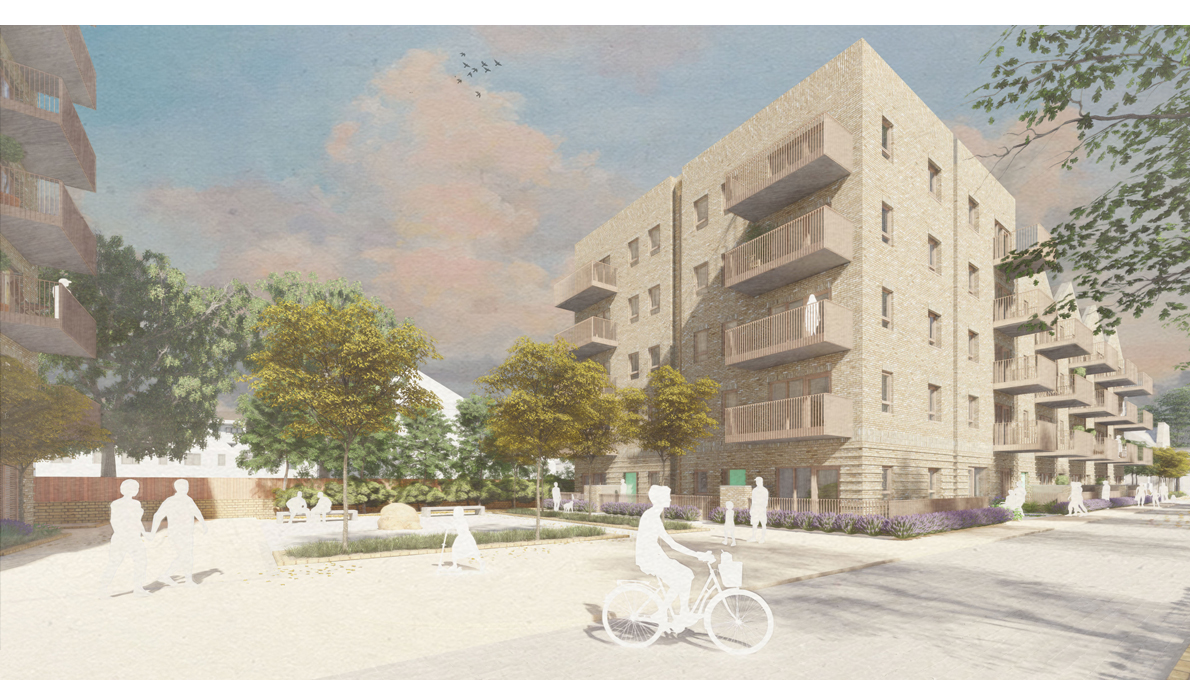Beyond Lockdown: Open Spaces in Urban Apartment Blocks
As the coronavirus pandemic has forced millions of workers and their families around the United Kingdom to stay at home, is it time for new developments to re-consider the sizes and quality of private and communal amenity being provided for urban apartment dwellers?
Open space is an important component in the layout and character of new apartment buildings ensuring not only a satisfactory standard of accommodation for occupiers but also in providing pleasant and appropriate setting for buildings and ensuring new developments make a positive contribution to the public realm. In addition, access to well-designed public open space is a key contributor to quality of life and personal well-being of those who live and work in new buildings.
As a developer the issue of how much and what type of open space is one, we have always felt is at risk of being approached in a very formulaic way. The National Planning Policy Framework states that (2102 and 2019): a developer is required to provide the appropriate amount and mix of public open space for the size of the development, however each development is different and can have a mix of public open space provision within the development. Local planning policy then sets amenity space targets that we as developers then need to either meet or try to negotiate with local planners. This requirement to hit particular targets or areas of play space or green space does not always lead to space that will be well loved or used by residents. There also doesn’t appear to be a structured way to consider amenity space beyond the site boundary that residents and neighbours can use and enjoy and therefore help clarify what role the new amenity space in a development should play.
Post COVID 19, in a world where the industry will be trying to recover and maximise housing delivery both through achieving density and ensuring financial viability whilst balancing a number of competing needs on development sites, the industry may have to reconsider how these spaces work. What policy doesn’t address is whether quality can replace quantity. Can smaller high-quality communal space perform a better role in terms of amenity for residents rather than larger low-quality space which meets the numbers? This would negate the quantity being provided and ensure that it’s of a high quality, enabling more room for housing or infrastructure.
As an SME residential developer with new residential apartment blocks in the planning pipeline, we have opted for a multiplicity of green communal spaces that are small but of high quality. For maximum impact, the proposed amenity areas are frequent, close to where residents live and overlook and therefore cared for. We have also proposed a central courtyard that is of high quality and carefully designed to ensure that it safely and easily accessible for all the future residents who will be living in the development. The above approach is something that was highlighted in the Living with Beauty (Building better building beautiful commission) report which was launched by the secretary of state earlier this year. The report suggests that a multiplicity of small spaces is preferable to one large space as this is usually neglected by residents in a development.
EU Housing statistics (2016) suggest that the UK has the smallest new-builds in West Europe due to pressure to reduce build costs which has resulted in private amenity space being too small to function effectively or meet occupants’ reasonable needs. In addition, London in particular suffers from overcrowding as the Resolution Foundation found that 16 percent of families in London live in overcrowded accommodation. That’s almost three times as much as any other region in the UK (Housing Outlook Q2, 2020). Now more than ever, the effects of this will be felt by residents across the UK due to the current lockdown measures in place which restricts citizens from leaving their properties and confined indoors. Post COVID 19, it may be a time to re-consider the amount of private amenity being provided. The levels of private amenity space being provided can have a significant impact on the health and well-being of potential occupiers. The evolving significance of private amenity given the current circumstances and more broadly in terms of mental health and well-being should form the basis of a review once the ongoing pandemic is contained.
What we are proposing within new residential apartment blocks in the planning pipeline is to not only meet but exceed the minimum standards for private amenity. In addition, we are also proposing a mix of balconies and terraces depending on the location of the units/floor, in order to provide future occupiers with the best quality private amenity provision. It is too soon to tell whether the current enforced lockdown will leave a lasting impact on whether people will spend more times in their homes and whether consumer behavioural habits will change. But we at Merchant Land are taking a proactive approach by considering this in new apartment blocks that we have in the pipeline.
Overall, even prior to the pandemic the sizes and quality of the amenity spaces being provided (both private and communal) has been vague from a policy point of view and needed to be addressed which housebuilders have been taking advantage of which contributes to smaller units and hence, overcrowding. On the other hand, councils have been pressing housebuilders to provide large spaces which tend to be neglected and not used by residents. It is important that a right balance is struck between the size and quality of space being provided, the financial impact that these spaces could have on housebuilders costs and the recovery process that the industry will inevitably be faced with.

